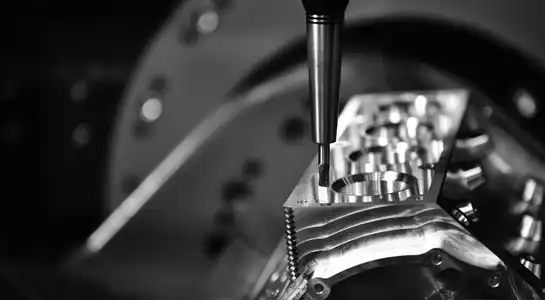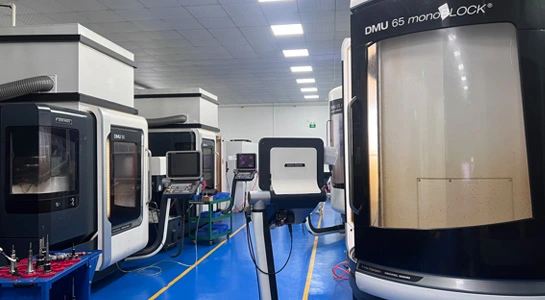How to Reduce Costs in CNC Machining Services?
Reducing costs in CNC machining services involves a multifaceted approach that combines smart design practices, material selection, and production strategies. By optimizing these aspects, manufacturers can significantly lower expenses without compromising on quality. Some key strategies include simplifying part designs, choosing cost-effective materials, leveraging economies of scale, and working closely with experienced CNC machining providers. Additionally, embracing technologies like CAD/CAM software and implementing lean manufacturing principles can further streamline processes and cut costs. Let's dive deeper into these methods to help you achieve more cost-efficient CNC machining services.
Optimize Design for CNC Machining
Simplify Part Geometry
Complex part geometries can significantly increase CNC machining time and tooling costs, as intricate features often require specialized tools and multiple setups. By simplifying designs where feasible, manufacturers can reduce machining time, minimize tool wear, and lower overall production expenses. Strategies include eliminating unnecessary features, rounding internal corners, avoiding deep cavities, and reducing overly intricate details that demand custom tooling. Thoughtful simplification not only improves efficiency but also enhances part reliability and repeatability, making the production process more cost-effective and predictable.
Design for Manufacturability (DFM)
Incorporating Design for Manufacturability (DFM) principles early in the engineering process helps reduce production costs and improves efficiency in CNC machining services. DFM encourages designers to consider machining capabilities and limitations from the beginning, resulting in parts that are easier to produce. Examples include using standard hole sizes, maintaining consistent wall thicknesses, avoiding excessively thin or fragile sections, and designing features that minimize material waste. By aligning design decisions with manufacturing constraints, DFM ensures smoother production, shorter lead times, and a more reliable final product.
Utilize CAD/CAM Software
Advanced CAD/CAM software is a powerful tool for optimizing CNC machining processes. These programs can generate efficient tool paths, reducing cutting time, minimizing wear on tools, and improving surface finishes. Simulation capabilities allow engineers to visualize the machining process, detect potential collisions, and identify areas that may cause defects or delays. Using CAD/CAM early in the design stage enables better planning, reduces the risk of errors, and ensures that both complex and simple parts can be manufactured with precision, consistency, and cost efficiency.

Smart Material Selection and Management
Choose Cost-Effective Materials
Material selection plays a crucial role in controlling CNC machining costs while maintaining part performance. Choosing cost-effective materials, such as aluminum instead of stainless steel for suitable applications, can significantly reduce expenses. Consider alternative metals and engineering plastics that meet strength, durability, and thermal requirements without exceeding budget constraints. BOEN Prototype provides a broad portfolio of materials, allowing manufacturers and designers to optimize the balance between cost, machinability, and performance, ensuring high-quality components are produced efficiently and economically.
Optimize Material Usage
Efficient utilization of materials is key to reducing waste and lowering overall production costs in CNC machining services. Techniques such as nesting multiple parts on a single workpiece, selecting standard stock sizes, and employing near-net-shape blanks can minimize machining time and material scrap. Thoughtful planning of part orientation and cutting sequences also contributes to efficiency. By maximizing material usage, manufacturers not only save money but also support sustainable production practices, reduce lead times, and increase overall throughput without compromising the quality or integrity of the finished components.
Implement Just-in-Time (JIT) Inventory
Just-in-Time (JIT) inventory management helps CNC operations maintain lean, cost-efficient production. By coordinating material deliveries precisely with production schedules, companies can minimize storage requirements and reduce the risk of material obsolescence. This approach avoids excess inventory tying up capital while ensuring that necessary materials are available when needed. JIT systems require careful planning, reliable suppliers, and accurate demand forecasting, but they enhance operational efficiency, reduce overhead, and support agile manufacturing processes, ultimately improving profitability and responsiveness to changing production needs.
Streamline Production Processes
Leverage Economies of Scale
Producing larger quantities of parts can help reduce the per-unit cost by spreading fixed expenses across more units. Consolidating orders or planning production around anticipated future needs allows manufacturers to take advantage of bulk material pricing and more efficient machine utilization. However, careful inventory management is essential to prevent overstocking, which ties up capital and increases storage costs. Balancing order size with production capacity ensures cost efficiency while maintaining flexibility to meet changing demand and minimize waste.
Optimize Machining Parameters
Optimizing machining parameters is crucial for achieving efficient and cost-effective CNC machining services operations. Adjustments to cutting speeds, feed rates, tool types, and depth of cut can significantly reduce cycle times and minimize tool wear, while maintaining high-quality outputs. Skilled CNC operators and engineers analyze each part’s material and geometry to determine ideal settings. Proper parameter optimization not only improves production efficiency but also extends tool life, reduces downtime, and ensures that precision and surface finish meet the stringent requirements of modern manufacturing.
Implement Lean Manufacturing Principles
Lean manufacturing focuses on eliminating waste and maximizing efficiency across production processes. Techniques such as 5S workplace organization, SMED (Single-Minute Exchange of Die) for reducing setup times, and visual management tools streamline workflows and improve operational clarity. Lean practices also encourage continuous improvement, enabling teams to identify bottlenecks, minimize unnecessary motion, and reduce inventory carrying costs. By integrating lean principles into CNC production, manufacturers enhance productivity, reduce lead times, maintain consistent quality, and create a more agile, cost-effective production environment.

Conclusion
Reducing costs in CNC machining services requires a holistic approach that addresses design, material selection, and production processes. By optimizing part designs, choosing cost-effective materials, and streamlining production, manufacturers can achieve significant savings without compromising quality. Remember that working with an experienced CNC machining provider like BOEN Prototype can provide valuable insights and expertise to help you implement these cost-saving strategies effectively.
FAQs
What is the most cost-effective material for CNC machining?
The most cost-effective material depends on your specific application. Aluminum is often a good balance of cost and performance for many projects.
How can I reduce setup times in CNC machining?
Implementing SMED techniques, using standardized tooling, and optimizing workflow can help reduce setup times.
Is it always cheaper to produce larger quantities?
While economies of scale can reduce per-unit costs, it's important to balance this with inventory management to avoid excess stock and associated costs.
Expert CNC Machining Services | BOEN
At BOEN Prototype, we specialize in delivering high-quality, cost-effective CNC machining services for prototypes and low-volume production. Our expertise spans a wide range of industries, from automotive to aerospace. With our advanced capabilities and commitment to efficiency, we help you optimize your designs and reduce costs without compromising on quality. Ready to streamline your CNC machining projects? Contact our team of experts at contact@boenrapid.com today.
References
Smith, J. (2022). Advanced CNC Machining Techniques for Cost Reduction. Journal of Manufacturing Technology, 45(2), 112-125.
Johnson, A. & Lee, S. (2021). Design for Manufacturability in CNC Machining. Industrial Engineering Quarterly, 33(4), 78-92.
Brown, R. (2023). Material Selection Strategies for Cost-Effective CNC Machining. Materials Science and Engineering, 56(1), 45-60.
Davis, M. (2022). Lean Manufacturing Principles in CNC Operations. International Journal of Production Research, 60(3), 301-315.
Wilson, T. (2023). Optimizing CAD/CAM Software for Efficient CNC Machining. Computer-Aided Design and Applications, 20(2), 189-203.
Taylor, E. & Garcia, L. (2021). Cost Reduction Strategies in Small-Batch CNC Production. Journal of Small Business Manufacturing, 15(3), 67-82.

How Can We Help?

Your Trusted Partner in Rapid Manufacturing.



